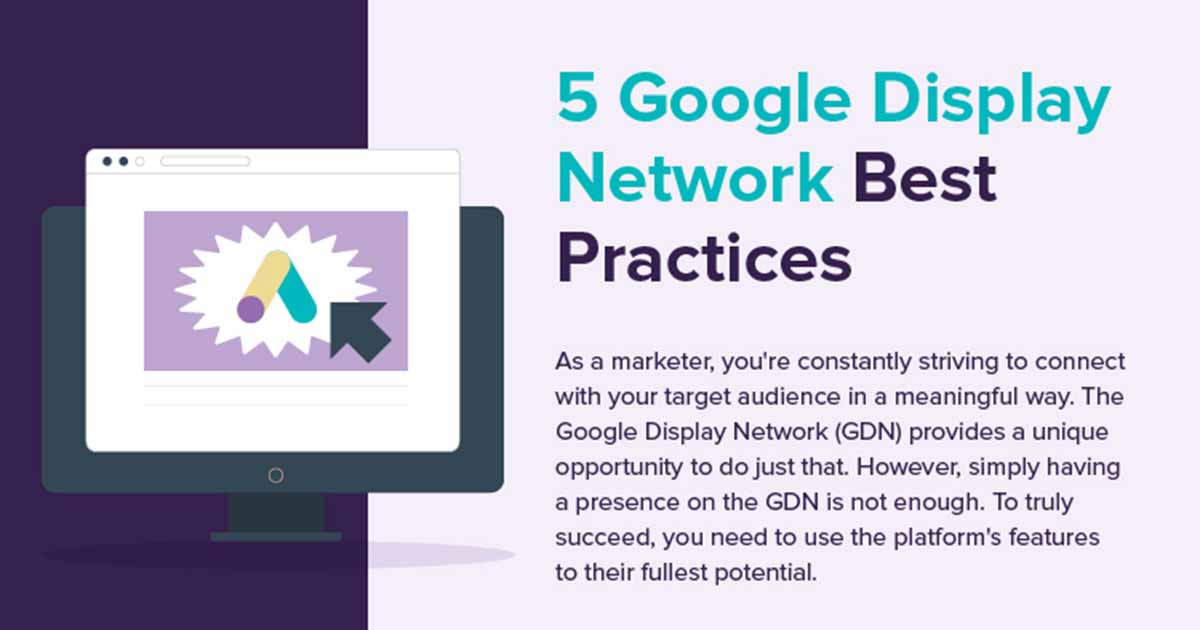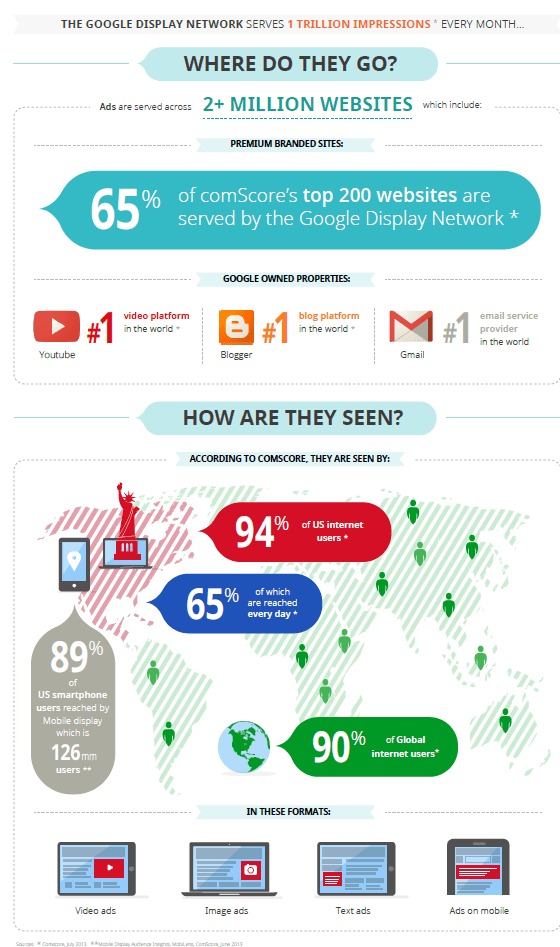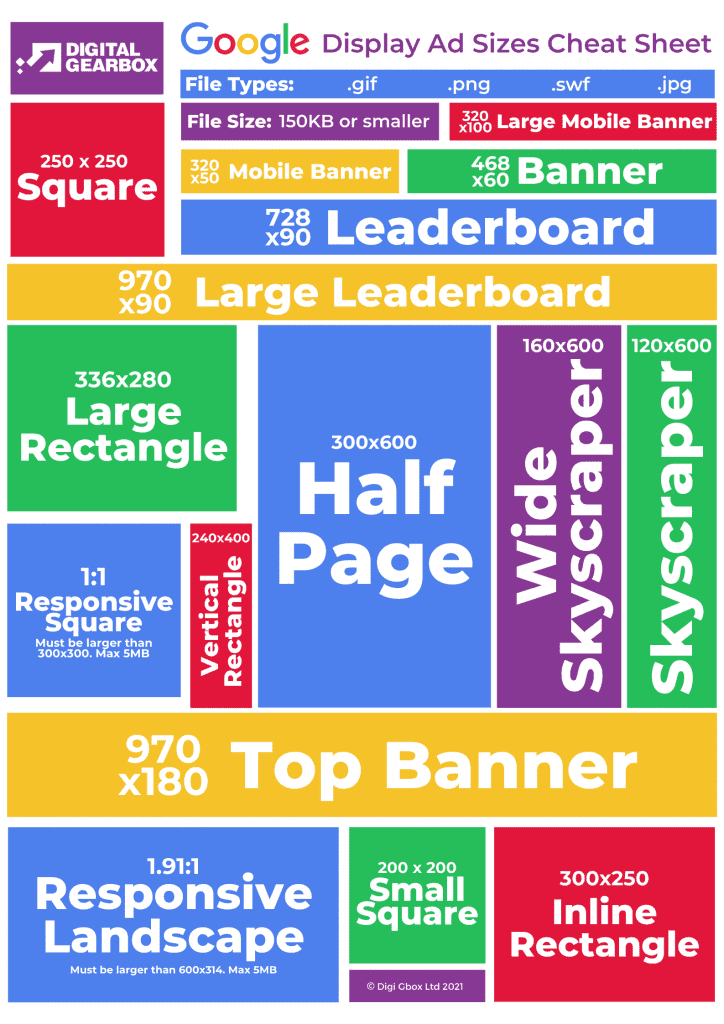Discover the secrets of Google Display Network and how it can revolutionize your online marketing strategy. Don’t miss out!

Image courtesy of via DALL-E 3
Table of Contents
Introduction to Google Display Network
The Google Display Network (GDN) is an essential tool in the world of digital advertising that helps businesses reach potential customers online. Imagine when you browse the internet and see ads popping up on websites or apps – that’s the magic of the Google Display Network at work! It’s like a giant billboard in the digital world, showcasing ads to people who might be interested in what companies have to offer.
What is Google Display Network?
The Google Display Network is like a vast collection of websites, videos, and apps where businesses can display their ads to a wide range of audiences. It’s an essential part of online ads that helps companies promote their products or services to the right people at the right time.
Why Use Google Display Network?
Using the Google Display Network can be super beneficial for businesses. It allows companies to show their ads on websites that their potential customers visit, making it more likely for them to notice and click on the ads. It’s a powerful way to spread the word about what a business has to offer and attract new customers.
How Google Display Network Works
When you see ads while browsing the internet, have you ever wondered how they seem to be so relevant to your interests? Well, that’s where ad targeting comes in! Google Display Network uses special technology to target specific audiences based on factors like their interests, demographics, and online behavior. This means that advertisers can show their ads to people who are more likely to be interested in what they have to offer.
Ad Placement
Now, let’s talk about where these ads actually appear. Google Display Network doesn’t just show ads on Google’s search results page. Instead, these ads can pop up on all sorts of websites and even mobile apps! So, when you’re scrolling through your favorite blog or playing a game on your phone, you might see ads from businesses that are trying to reach people like you.
Types of Ads on Google Display Network
When businesses advertise on the Google Display Network (GDN), they have a variety of ad formats to choose from. These different types of ads cater to various preferences and objectives, allowing advertisers to engage with their target audience effectively. Let’s explore the main types of ads you may encounter on the Google Display Network.

Image courtesy of www.marketingprofs.com via Google Images
Banner Ads
Banner ads are one of the most common forms of display advertising. These ads typically appear in different sizes and are placed strategically on websites within the Google Display Network. Banner ads can feature text, images, or animations, making them visually appealing to viewers. They are designed to capture attention and drive clicks to a specific landing page or website.
Video Ads
Video ads on the Google Display Network utilize the power of video content to convey a message to the audience. These ads can appear before, during, or after video content on YouTube and other partner websites. Video ads have the advantage of being highly engaging and can effectively showcase products or services in action. With compelling visuals and storytelling, video ads have the potential to leave a lasting impression on viewers.
Interactive Ads
Interactive ads are dynamic and engaging ad formats that encourage user interaction. These ads allow viewers to engage with the content by clicking, swiping, or taking other actions. Interactive ads can include quizzes, games, or product demos, creating a more immersive and personalized experience for users. By promoting active engagement, interactive ads can drive higher levels of interest and interaction with the brand.
Creating an Effective Ad Campaign
When you’re looking to make an impact with your online ads, it’s essential to create an effective ad campaign. This section will provide you with tips and strategies for crafting successful campaigns on the Google Display Network (GDN).
Setting Goals
Before diving into creating your ads, it’s crucial to establish clear goals for your ad campaign. Do you want to drive sales, increase brand awareness, or boost website traffic? Defining your objectives will help you tailor your ads to achieve the desired outcomes.
Designing Creatives
One of the key components of an effective ad campaign is designing compelling creatives. Your ads need to grab the attention of your target audience and entice them to take action. Make sure your creatives are visually appealing, on-brand, and include a clear call-to-action.
Measuring Ad Performance
When it comes to running ads on the Google Display Network, it’s essential to track how well your ads are performing. This allows you to understand what is working, what needs improvement, and where to focus your efforts. Let’s dive into the key aspects of measuring ad performance on the GDN.

Image courtesy of www.wordstream.com via Google Images
Key Metrics
There are several important metrics you should pay attention to when analyzing your ad performance on the Google Display Network. These metrics provide valuable insights into how your ads are doing and can help you make informed decisions to optimize your campaigns.
Impressions: Impressions refer to the number of times your ad has been viewed by users on websites within the GDN. It gives you an idea of the visibility of your ads.
Clicks: Clicks indicate the number of times users have clicked on your ad to visit your website or landing page. It shows how engaging your ad is to your target audience.
Conversions: Conversions are the actions you want users to take after clicking on your ad, such as making a purchase, signing up for a newsletter, or downloading a resource. Tracking conversions helps you measure the effectiveness of your ad in driving desired outcomes.
Using Google Analytics
Google Analytics is a powerful tool that can provide in-depth insights into the performance of your ads on the Google Display Network. By integrating Google Analytics with your ad campaigns, you can track various metrics, analyze user behavior, and understand the impact of your ads on website traffic and conversions.
With Google Analytics, you can track the performance of specific ad creatives, identify the sources of traffic to your website, and measure the ROI of your ad campaigns. By leveraging the data and reports available in Google Analytics, you can make data-driven decisions to optimize your ad performance and achieve your advertising goals.
Optimizing Your Ad Campaign
When it comes to running successful ad campaigns on the Google Display Network (GDN), it’s essential to continuously optimize and improve your strategies. Here are some key tactics to help you get the most out of your campaigns:
A/B Testing
One effective way to optimize your ad campaigns is through A/B testing. This process involves creating two variations of an ad (A and B) with small differences, such as the headline, image, or call-to-action. By running both versions simultaneously and measuring their performance, you can determine which one resonates better with your audience. This iterative approach allows you to refine your ads based on real data and insights.
Regular Reviews
Consistently reviewing and analyzing the performance of your ad campaigns is crucial for optimization. By monitoring key metrics such as click-through rates, conversions, and impression share, you can identify trends and patterns that indicate areas for improvement. Regularly adjusting your targeting options, ad creatives, and bidding strategies based on these insights will help you optimize your campaigns for better results.
Common Challenges and How to Overcome Them
Ad fatigue happens when your audience sees the same ad too many times and starts ignoring it. To avoid ad fatigue, you can refresh your ad creative regularly by changing the images, messaging, or calls to action. This way, your audience will stay engaged with your ads and not become bored of seeing the same content repeatedly.

Image courtesy of digitalgearbox.co.uk via Google Images
Low Click-Through Rates
Low click-through rates occur when your ads are not compelling enough to prompt viewers to click on them. To boost your click-through rates, consider improving your ad copy by making it more enticing and relevant to your target audience. You can also try experimenting with different ad formats or placements to see what works best for driving clicks.
Future of Google Display Network
The future of Google Display Network (GDN) looks bright with exciting innovations and emerging technologies shaping the way online advertising will evolve. As technology continues to advance, GDN is expected to adapt and grow to meet the changing needs of businesses and consumers alike.
Emerging Technologies
One of the key emerging technologies that will influence the future of GDN is artificial intelligence (AI). AI-powered algorithms will enable more precise ad targeting, allowing businesses to reach their desired audiences with greater accuracy. Machine learning will also play a significant role in optimizing ad performance and delivering personalized experiences to users.
Predicted Trends
Looking ahead, there are several trends that are predicted to shape the future of digital advertising and impact GDN. One of the major trends is the rise of video ads as a dominant form of online advertising. With the increasing popularity of video content, businesses are expected to leverage video ads on GDN to engage and captivate audiences.
Another trend to watch out for is the growth of mobile advertising. As more users access the internet through mobile devices, businesses will need to focus on creating mobile-friendly ad campaigns that deliver seamless experiences across all devices. GDN is poised to adapt to this trend by offering mobile-specific targeting options and ad formats.
In addition, the emphasis on data privacy and user consent will continue to shape the future of online advertising. With regulations like GDPR and CCPA dictating how data can be collected and used, businesses will need to prioritize transparency and compliance in their ad campaigns on GDN.
Conclusion
In conclusion, the Google Display Network (GDN) is a powerful tool for businesses to reach their target audience through digital advertising. By understanding how GDN works, the types of ads available, and creating effective ad campaigns, businesses can increase their online presence and drive growth. It is essential to measure ad performance, optimize campaigns, and address common challenges to ensure success on the GDN platform.

Image courtesy of www.business2community.com via Google Images
Recap of Key Points
We have covered various aspects of the Google Display Network, from its basic functions to creating effective ad campaigns and measuring performance. Understanding ad targeting, placement, and different ad formats is crucial for success on GDN. By setting clear goals, designing creative ads, and analyzing key metrics, businesses can optimize their campaigns and stay ahead in the digital advertising landscape.
Final Thoughts
As you navigate the world of online advertising, remember that the Google Display Network offers vast opportunities to showcase your brand and connect with your audience. By staying informed about emerging technologies and trends, you can adapt your strategies to stay competitive. With dedication, creativity, and a willingness to learn from challenges, you can harness the power of GDN to achieve your marketing goals. Best of luck on your advertising journey!
Want to turn these SEO insights into real results? Seorocket is an all-in-one AI SEO solution that uses the power of AI to analyze your competition and craft high-ranking content.
Seorocket offers a suite of powerful tools, including a Keyword Researcher to find the most profitable keywords, an AI Writer to generate unique and Google-friendly content, and an Automatic Publisher to schedule and publish your content directly to your website. Plus, you’ll get real-time performance tracking so you can see exactly what’s working and make adjustments as needed.
Stop just reading about SEO – take action with Seorocket and skyrocket your search rankings today. Sign up for a free trial and see the difference Seorocket can make for your website!
FAQs
What is the Google Display Network?
The Google Display Network, also known as GDN, is a platform that allows businesses to display their ads on a wide range of websites and apps. It helps businesses reach their target audience through visual ads that can appear on websites related to the product or service being advertised.
How can I create an ad on GDN?
To create an ad on Google Display Network, you need to follow a few simple steps. First, you’ll need to have a Google Ads account. Then, you can create your ad campaign, choose your targeting options, design your ad creatives, and set your budget. Finally, you can launch your ad campaign and monitor its performance to make any necessary adjustments.
How do I know if my ad is performing well?
To determine if your ad is performing well on GDN, you can look at various indicators of success. Key metrics to consider include the number of impressions (how many times your ad was displayed), clicks (how many times users clicked on your ad), and conversions (actions users took after clicking on your ad, such as making a purchase or signing up for a newsletter). By tracking these metrics, you can understand how well your ad campaign is resonating with your target audience and make improvements as needed.







